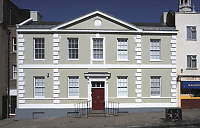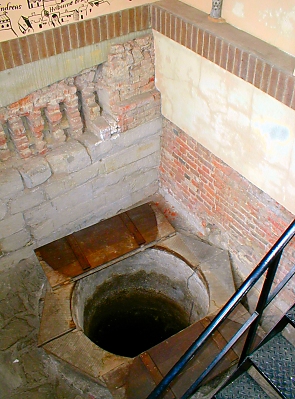|
|
 |
|
Islington
|
 |
A former monastic settlement now turning increasingly hedonistic, conveniently located between King’s Cross and the
City of London. Around 1140 Jordan de Briset and his wife founded the hospital and priory of St John of Jerusalem and the
nunnery of St Mary. The sisters of the convent drew their water from a well that became known as the clerks’ well because
City students performed an annual miracle play close by. In 1370 Sir Walter de Manny established the Carthusian priory of
Charterhouse, which was rebuilt as a rambling mansion after Henry VIII’s dissolution of the monasteries. It subsequently
became Charterhouse school and is now London’s most picturesque retirement home. The nunnery’s buildings were
also demolished after the Dissolution but the clerks’ well can still be seen through the window of an office block on
Farringdon Lane. Parts of St John’s priory have survived and a revived ‘venerable order’ (which has metamorphosed
into the health care organization St John Ambulance) later returned to St John’s Gate, where they maintain their headquarters and a museum. Richard Sadler established
a music hall and spa in north Clerkenwell in 1683. Sadler’s Wells has since evolved via a series of rebuildings into one of London’s leading venues for the performing arts, especially
ballet and opera. From medieval times Clerkenwell attracted edge-of-City trades like jewellery, lock-making, printing, bookbinding,
and the making and repair of clocks and watches – and there are still practitioners of several of these crafts today.
When many of the larger firms closed or moved out to suburban industrial estates, they left behind factories and warehouses
that have now been converted for ‘loft style living’. Clerkenwell also had a murky side, and the House of Detention,
formerly an underground prison, and the Old Sessions House, once the busiest court in England, survive from its period as
a den of thieves and receivers, pickpockets and coiners. In the 19th century the district was said to have the highest murder
rate in London. Most of Clerkenwell’s housing still consists of Georgian terraces and municipal and philanthropic tenement
blocks from the first half of the 20th-century, but apartment complexes like Brewhouse Yard are filling the few available
spaces. Numerous gastropubs and minimalist restaurants cater to the new community of media-oriented young professionals.
 |
 |
|
|
|
 |

|
| Looking like an oversized privy, this is the clerks' well from which Clerkenwell draws its name |
George Gissing depicted the underbelly of Clerkenwell in his 1889 novel The Nether World. Vladimir Lenin produced 17
issues of the Russian revolutionary newsletter Iskra in 1902–3 at what is now the Marx memorial library (shown
below left). Arnold Bennett set his 1923 tale Riceyman Steps in Clerkenwell, although the Potteries-born author did
not know the area well and had to draw on William Pinks’ study of the district (republished in 2001). Peter Ackroyd’s
2003 story of medieval murder and religious intrigue is entitled The Clerkenwell Tales.
|
 |
|
|
|
|
|
Postal district: EC1
Population: 9,773
Further reading: William Pinks, History of Clerkenwell, Francis Boutle, 2001
and Richard Tames, Clerkenwell and Finsbury Past , Historical Publications, 1999 , Historical Publications, 1999
Text and selected images are reproduced with the permission
of Chambers but may differ from the published versions
All content © 2005–2010
|
|
|
 |

